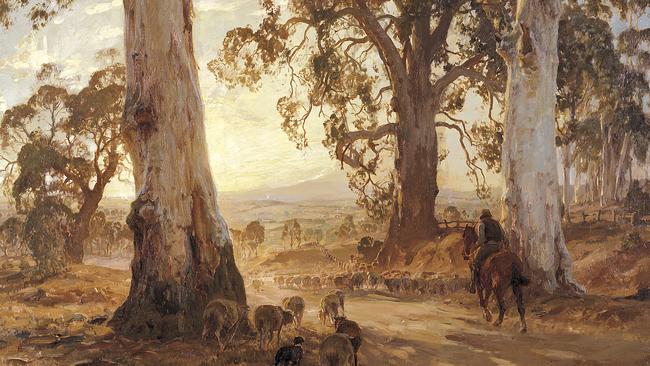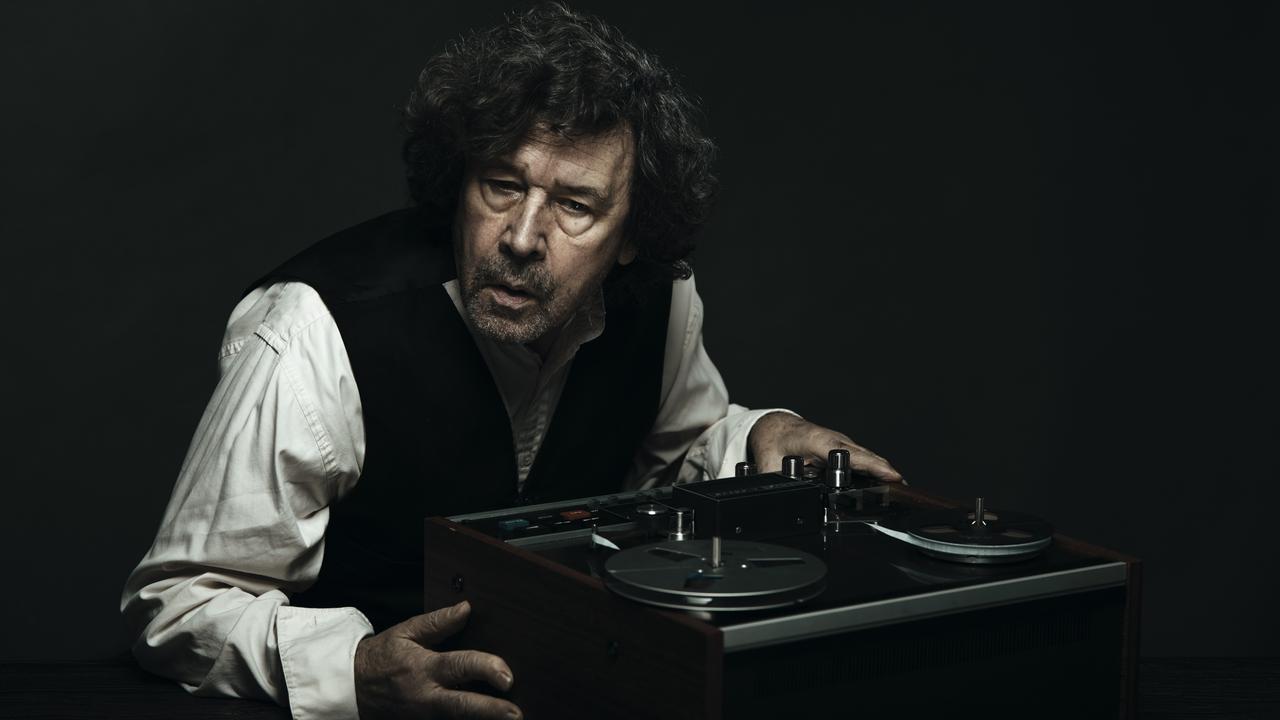Hans Heysen set against Australian landscape in biography by Lou Klepac
As Lou Klepac illustrates in this biography, Hans Heysen beautifully captured Australiana.

The author of this impressive book, Lou Klepac, has had a long association with the life and work of German-born Hans Heysen, a pioneer of Australian art who transformed how we see, draw and paint the Australian landscape.
Indeed, when Klepac became curator of paintings at the Art Gallery of South Australia in 1966, Heysen was still on its board of trustees. Before he died in 1968, the then 90-year-old artist invited the author to The Cedars, a 60ha property near Hahndorf in the Adelaide Hills, and guided him through his studio there.
Since then, Klepac has seen all the major exhibitions devoted to Heysen and in 1988 he organised a showing of Heysen’s drawings and watercolours at the SH Ervin Gallery in Sydney.
This superb artistic biography demonstrates how Heysen was the first significant European artist to paint figurative portraits of gum trees and of other aspects of rural Australiana. His subjects included sheep and their drovers, as well as cows, bullocks and working horses.
There are also some warm human portraits, including a loving painting of the artist’s wife.
Figurative is often a term used when we talk about representational art. Heysen was a post-impressionist: he was evocative of realism but did not try to achieve it to perfection or photographically. Throughout his prolific artistic life, he wanted to imbue the viewer with romantic notions of the landscape, not portray it as it actually was.
Despite the artistic value of Heysen’s work having been dismissed or undervalued by “progressive” critics since the mid-1950s, Klepac rightly recognises him as one of Australia’s most noted landscape artists.
Especially during the three decades after Federation in 1901, Heysen was extremely influential in enabling artists, critics and the public to appreciate the role and meaning of nature in a specifically Australian context.
As artist John Olsen remarks:
Hans Heysen was the first non-indigenous artist to tackle the landscape of Australia’s interior. There he discovered trees that embed themselves into the earth, and reach so sturdily that they are like Doric columns. In a sense they become like portraits. Yet there is nothing Bohemian about Heysen. His life and work represented a stability as strong as his gum trees.
Born in Hamburg on October 8, 1877, Heysen immigrated with his family to South Australia in the early 1880s. From 1885 young Hans was schooled in Adelaide. He demonstrated considerable artistic skill.
Heysen went on to study for four years in Europe, where he was greatly influenced by French artist Jean Millet (1814-75), before returning to South Australia in September 1903.
Within a year, Heysen achieved stellar success. State galleries quickly acquired two major works.
In 1904, his painting Mystic Morn won the Wynne Prize for the best landscape painting of Australian scenery in oils or watercolours. Heysen was 27 and it was the first of nine wins.
That December Heysen married Sallie Bartels, whose father, Adolph Heinrich Friedrich Bartels, had twice been Adelaide lord mayor. This connection did no harm to Heysen’s standing in the German community in South Australia and across wider Anglo-Celtic Australia.
As Klepac documents, in 1908 Hans and Sallie moved to the Adelaide Hills. Four years later they acquired The Cedars, a property that inspired several of Heysen’s important works. The couple’s large family included daughter Nora Heysen (1911-2003), the first woman to win the Archibald Prize, in 1938, and the first female Australian official war artist.
The wonder of Heysen’s art is not just the result of his technical skill and exquisite draughtsmanship but also his passionate love and keen perception of the Australian landscape. As Klepac argues, Heysen was “inspired by the light and the landscape of Hahndorf and the Adelaide Hills, which he transformed into an Arcadian vision that can still haunt us with its sense of timeless beauty”.
This fine book reproduces a range of Heysen’s masterpieces, including Red Gold (1913), Droving into the Light (1921) and The Three Gums (1921). It also explores Heysen’s 1920s trips to the Flinders Ranges, where he discovered “a mysterious primordial landscape”.
It is difficult to disagree with Klepac’s claim that some of Heysen’s finest works “are the result of his many visits to the interior of the continent, which captured his imagination”.
Such an imaginative response to the Australian landscape is exemplified by almost all of Heysen’s Wynne Prize paintings, especially Red Gums of the Far North, which won the award in 1931. This detailed biography boasts 149 superb black-and-white and coloured plates, including numerous reproductions of Heysen’s major paintings, as well as a score of revealing charcoal drawings and etchings, plus some stunning photographs. It also contains several extremely useful quotes from the artist’s surviving cache of correspondence.
As a book, Hans Heysen is beautifully rendered. It is a well-researched and lucidly written study of one of Australia’s most important artists, one whose achievements may not have always been properly valued and understood.
Appropriately, Klepac acknowledges that it was impossible to investigate Heysen’s life and work without consulting Colin Thiele’s Heysen of Hahndorf, which was first published in 1968, the year of the artist’s death.
Ross Fitzgerald is the author of 39 books.
Hans Heysen
By Lou Klepac
The Beagle Press, 216pp, $120 (HB)
***
HANS HEYSEN
The difficulty in morning light
was to keep the gum tree solid. Its trunk
thrusts to the top of the frame, light
as an obelisk in mist. Like a mother
it holds in the sway of skirts the lie
of the land to the thumb-tall hills, a litter
of leaves and a passing child; and draws the sky
down from a peak to steep it in the picture.
The difficulty was to keep its bulk
where light-coloured trunk and limbs were seen
against the sun’s raw morning bulb.
To paint the wooded weight of tree,
with its sap and slant and stubborn hold,
yet show light playing through the leaves
as truth, world’s truth, not absolute, is blent
and filters through our pulsing temperament.
Simon West


